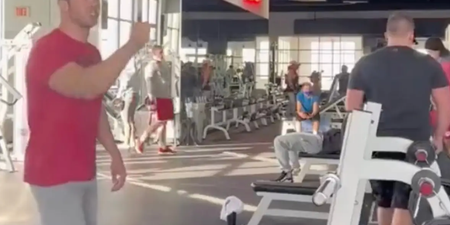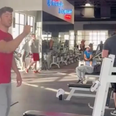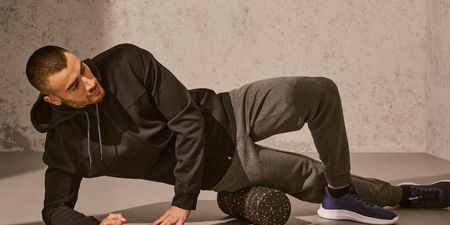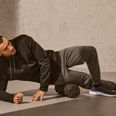
In our latest offering from fitness expert Bogdan Merkes, he talks us through getting started on functional fitness – and advises ditching the weights for a while.
Visualise this.
“Could you help me pick up this box, please?” A female colleague asks for your help. Fuelled with the macho-man spirit borne from a particularly productive work-out just hours earlier, you gladly swoop to the rescue, eager to impress. Snap – you hear your back give way and you squeal in agony as your spine struggles to stabilise … and your cheeks flush an ashamed shade of rouge.
Sure, your biceps might be bulging and you might look fit and ready for the beach but ask yourself this: Can you load heavy shopping bags into the boot? Are you capable of hoisting the water tank into the dispenser? Are you fit enough to sprint up five flights of stairs in a rush? In short, are you really functionally fit?
More often than not, we are consumed by the appearance of fitness and neglect the development of true body strength.
Functional fitness is the new buzzword circulating on gym floors and pervading the workout regimes developed by the top trainers around the world today. It refers to the phenomenon of training which focuses on constructing a physique capable of doing real-life activities in real-life positions, not just concerned with a certain amount of weight in an idealized posture created by a gym machine.
Where did it all start?
Functional fitness originates back to our ancestors many generations ago, at a time when humans lived a primal lifestyle – the hunter-gatherer era. Our ancestors did not consciously train but were, by the very nature of their lifestyle, active; climbing trees, doing interval sprints (running from wild animals), lifting stones and logs to build shelter, hunting and gathering food. That way of life kept them cardiovascularly fit and strong. More importantly it kept them relatively free of acquired diseases (like obesity, diabetes, osteoporosis, etc). This meant they enjoyed a better, more fruitful and ultimately healthier lifestyle. Thus, we derive the term functionally fit.
Worldwide, this concept has been raved about by fitness gurus in blogs and columns, and it’s gaining quite some momentum. All over the web, you’ll find pictures and videos of people performing bodyweight moves and using kettlebells, sand bags, suspension trainers and tyres, all of which attempt to mimic the “resistance equipment” of our ancestors.
Functional training strives to work the major muscle groups in their full range of motion to enable us to perform everyday tasks, pain-, and let’s not forget, injury-free. Functional training contrasts to conventional weight training, or at least that which is practised by most people in health clubs nowadays, which isolates muscle groups but doesn’t teach these groups to synchronize with one another.
Today functional fitness is not only used in the rehabilitation of injuries but also as the foundation for strength and conditioning.
So what’s an example of a functional exercise?
Think of a squat. Not the kind of squat you do on a leg press machine, but the kind you do on your feet. Start with a shoulder-width stance then, slowly, lower the hips until the thighs are parallel to the floor while maintaining a flat spine and bracing the core muscles. Then, using these same muscles, thrust forward with your hips, squeeze your glutes and return back to a standing spot.
The squat will build up muscles in all compartments of the thigh and leg and the muscles of the back and spine. It will engage the core and stabilise pelvic floor muscles. In fact, it will pretty much exercise the whole body, increasing overall strength, pumping up the cardiovascular system and giving you a metabolic boost, helping to sizzle away tons of calories. Now, compare this to the aforementioned leg press on a machine – sure, you’re strengthening isolated muscles in the thigh and leg, but your body is not learning anything because not only does it fail to engage the core and stabilizing muscles, since the machine is doing it for you, but it also lacks that same effect of firing up the metabolism so, ask yourself: WHY SPEND MORE TO GET LESS?
It’s like opening a savings account with a choice of two banks, one offering a return of 4.5% pa and the other 6%. Which one would you go for? Like the higher rate savings account, you can rest assured that you make a better choice avoiding the machines and switching to a more natural range of motion, using free or body weight resistance.
Start banking on functional fitness. No terms and conditions apply.
Let’s take this squat motion and refer back to the real-life scenario of our macho-man in the office offering to pick up this big heavy box. Not only will he have better form to do it, reducing the risk of serious injury, but he will also have strengthened core and leg muscles making the lift a breeze … and if he’s really lucky, he could also score himself a date.
Enough said … Where do I start?
My advice: forget about weights altogether for a while. From experience, I’ve seen that the majority of new and experienced gym-goers struggle to control their own bodyweight never mind any surplus resistance.
Start with simple movements, like the bodyweight squat. Build that into a single-legged squat. Switch sides during each manoeuvre to promote balance and muscle integration on either side of your body. Then add other exercises like press-ups, planks, bodyweight rows and balance exercises. The single-legged squat alone is a move very few people can do, but I’ve noticed an awful lot more people out there leg pressing hundreds of kilos so, do you really think it’s plausible to assume that the weights on a machine are an accurate representation of one’s strength?
Once you can control and balance your own body weight, only then should you start to incorporate weights. For example, when doing a one-legged squat, try grabbing a dumbbell in your hand. This will challenge your body’s ability to synchronise by teaching the upper body to work with the lower body via the core.
I can guarantee that if you train by the ethos of functional fitness you will, without a doubt, become stronger, fitter, leaner, and as a result, become the proud keeper of a perfectly sculpted and toned physique worthy of the most esteemed glances.
From busy office workers, people recovering from injury, right through to high performance athletes, EVERYONE will benefit from being functionally fit.
Bogdan Merkes is writing a column every Wednesday until the end of September. If you want to learn more about his services check out ultimatefitcrew.com or like his page on Facebook. Check out more articles from Bogdan on his blog at bogdanmerkes.com, and you can also follow him on Twitter. All comments/questions/suggestions gratefully accepted.
[Main picture via KetuGajjar/Flickr Creative Commons]
LISTEN: You Must Be Jokin’ with Aideen McQueen – Faith healers, Coolock craic and Gigging as Gaeilge





















































